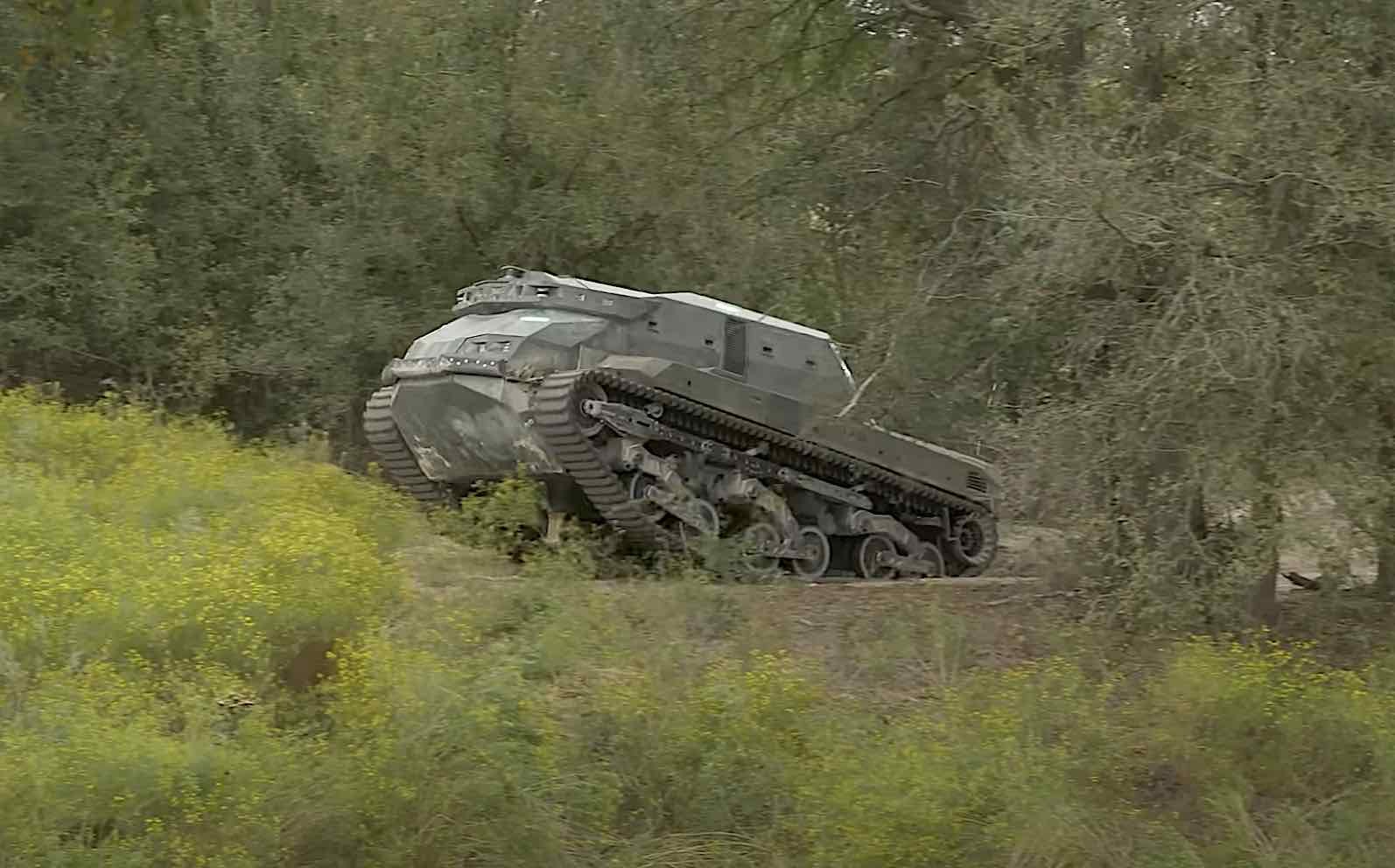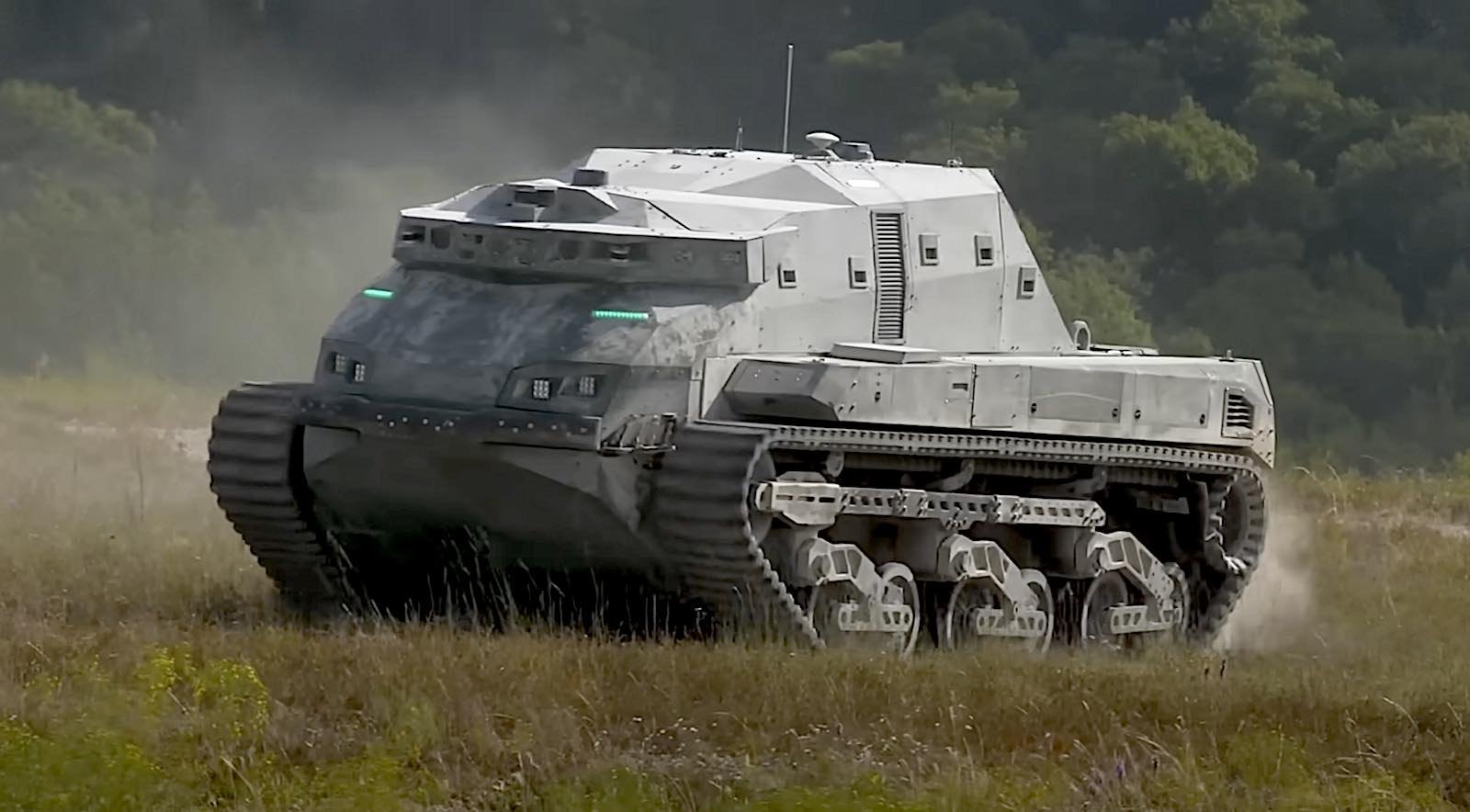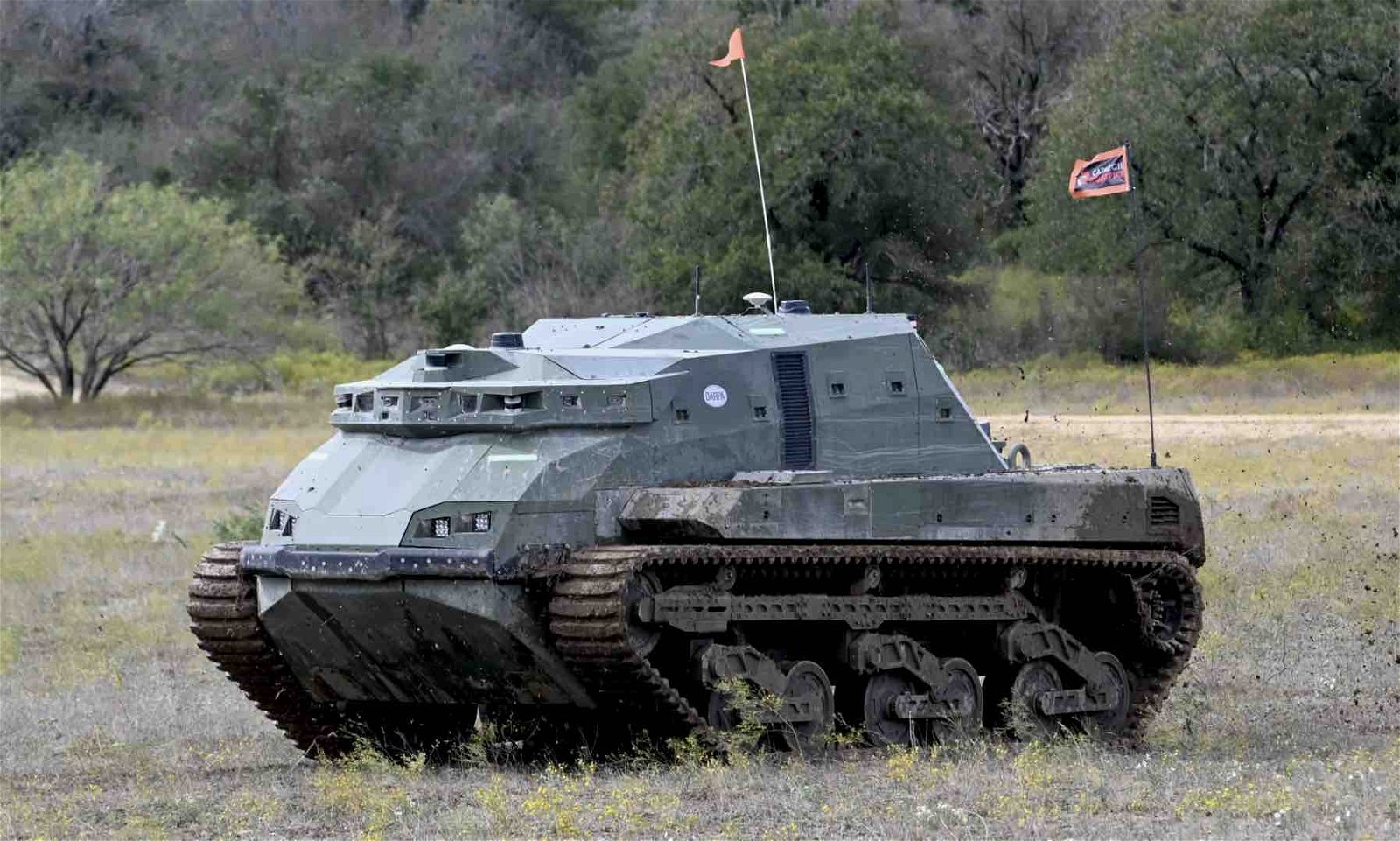The Defense Advanced Research Projects Agency (DARPA) says it has successfully conducted tests with an extra-large new fleet vehicle as part of its Robotic Autonomy in Complex Environments with Resiliency (RACER) program.
The agency says its autonomous movement testing of the new RACER Heavy Platform (RHP) vehicles marks an important advancement in the program and its ability to scale up the capabilities and algorithms it relies on to control these new ground-based systems.
The primary goal of the RACER program from its outset has been the development and demonstration of new algorithm technologies capable of powering autonomous systems for the control of Unmanned Ground Vehicles (UGVs). Past developments have typically relied on sensor technologies for the control of UGVs, whereas RACER’s unique algorithms aimed to facilitate software capable of matching off-road performance and speeds normally only capable while under the control of a human driver.
In recent years, advances in the self-driving car industry have helped showcase the development of algorithms capable of safely and accurately controlling vehicles under a diverse range of conditions. Despite such advances in the consumer realm, the military development of useful autonomous algorithms for the control of UGVs has been slow, mainly due to the demands of the complex off-road environments where military operations occur.
DARPA’s 12-ton RACER RHP skid-steer tracked vehicles are close to the size of other robotic ground-based combat vehicles currently in development that do not require live personnel for control, and offer an additional component alongside the smaller wheeled RACER Fleet Vehicles (RFVs) which have already been deployed for use.


Stuart Young, program manager for DARPA’s RACER program, says that having both vehicles with their different functional purposes and capabilities will ultimately help the agency achieve one of the program’s key goals, which he defines as “platform agnostic autonomy” that can perform reliably in complex off-road environments where a variety of variables contribute to overall unpredictability.
“For Phase 2, adding the combat-scale RHP robot supports porting and performance demonstration of RACER autonomy stacks at multiple scales concurrently while moving between highly varied terrains,” Young said in a statement.
With assistance from NASA’s Jet Propulsion Lab in Pasadena, California, and teams from the University of Washington, DARPA initiated the second phase of the RACER program last fall, culminating in the program’s fourth experiment. Presently, the agency is planning to resume testing periodically at roughly six-month intervals.
Young says that during Phase 2 testing, the RACER program’s average speed goals for autonomous off-road performance allowed its new systems “to also show adaptability and resiliency of autonomous software at multiple, platform-agnostic ground robot scales in an array of complex, military-relevant environments.”
Young added that the agency views these combined performance capabilities “as vitally important to Army and Marine needs in robotic vehicle programs of record that are closely tracking RACER, and which represent possible transition opportunities for the program.”
Late last year, DARPA conducted testing at several military training areas in Texas as its second phase began, which involved unmanned RFVs that were tested within a limited training area spanning 15 square miles that featured vegetation, ditches, waterways, and rock outcrops that offered a wide range of environmental obstacles for helping to gauge the RACER vehicle capabilities.
DARPA says the RACER teams had not previously operated in these specific environments, nor had they been provided any sensor data or other information about these military training areas. 30 autonomous runs were carried out on courses up to 10 miles long, with the RACER systems moving at speeds up to 30 miles per hour and completing more than 150 miles of testing completely autonomously.


The RHPs also completed 30 miles of testing in autonomous-route-following mode during the recent tests performed in March, which allowed it to gauge its sensory capabilities and test other subtleties of the RACER technologies and their autonomous control.
Young says the early results of the Phase 2 activities are showing that RACER’s technologies are currently proving to be highly adaptable, both in terms of performance in unique environments and with relation to their use on virtually any of the robotic systems on which they have currently been tested, regardless of size.
Additional experiments will be undertaken later this year following the program’s current six-month schedule, while Phase 2 teams are currently preparing for additional testing and development. Additional details about DARPA’s RACER program can be found on the agency’s website.
Micah Hanks is the Editor-in-Chief and Co-Founder of The Debrief. He can be reached by email at micah@thedebrief.org. Follow his work at micahhanks.com and on X: @MicahHanks.

